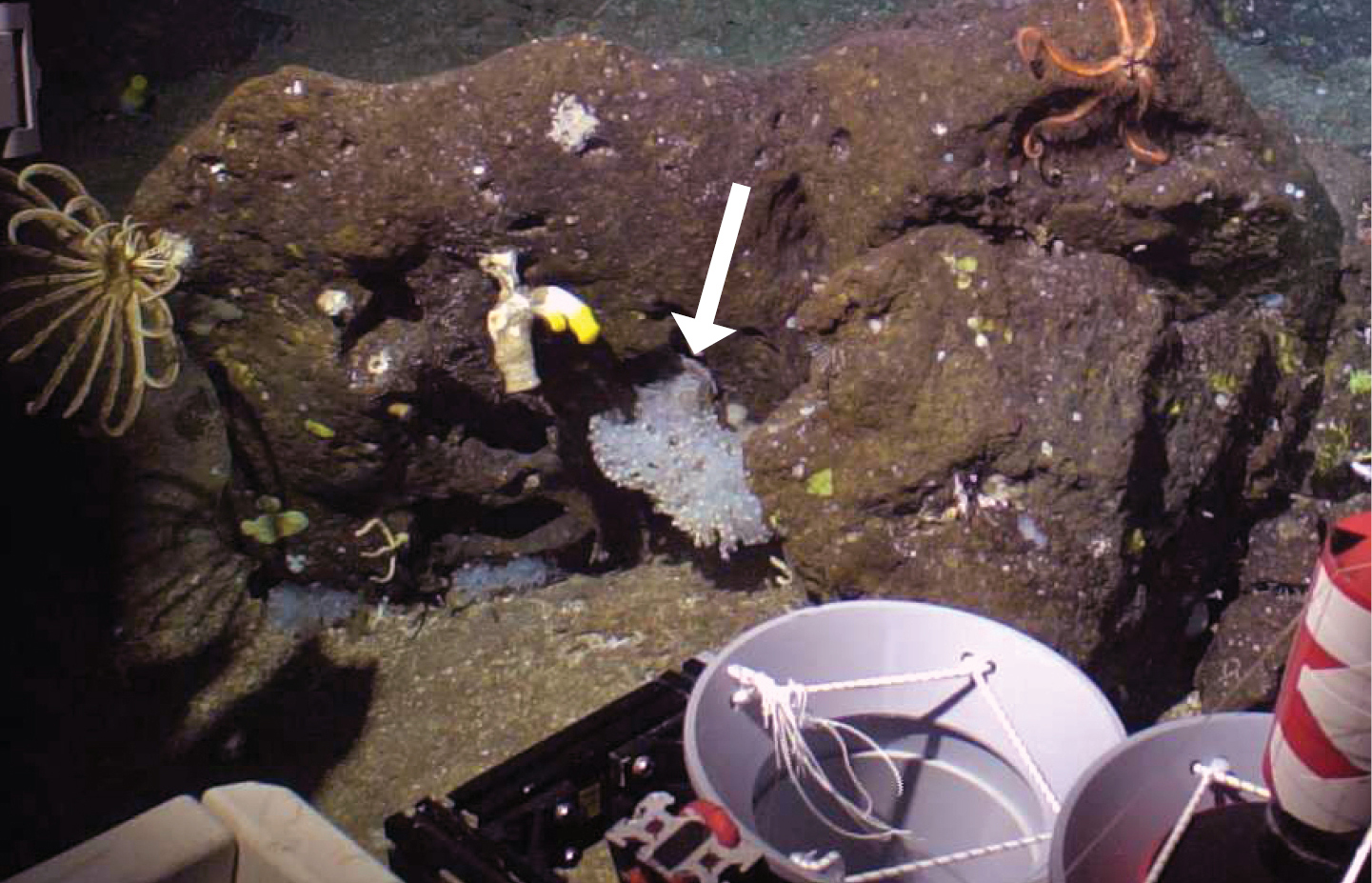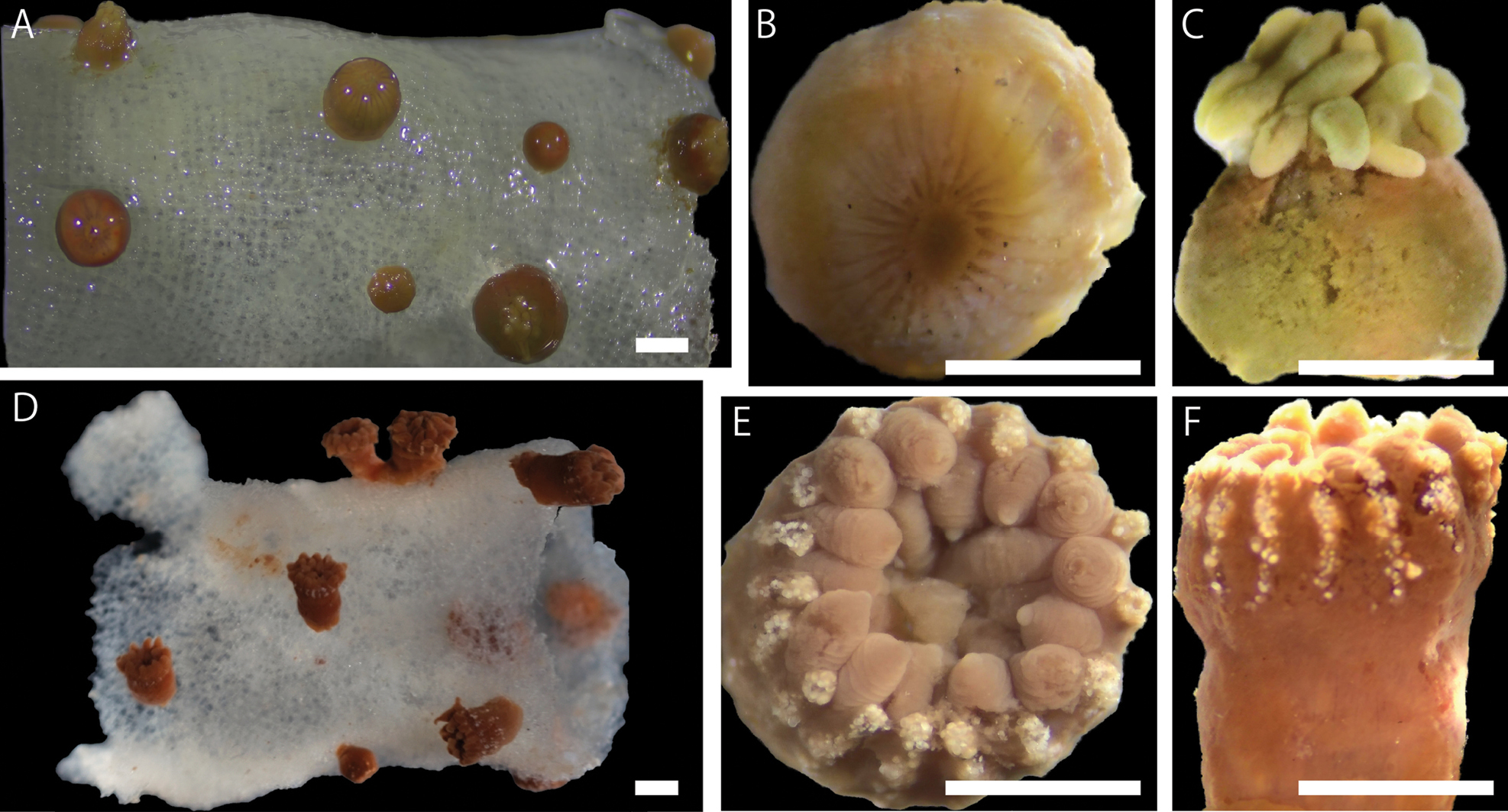In the depths of the northwestern Pacific Ocean, researchers have uncovered a tiny yet fascinating new species of marine life, and it’s been awarded a name fitting its appearance – “little flower”.
Vitrumanthus flosculus, with “flosculus” meaning “small flower” or “floweret” in Latin, was discovered on underwater mountain ranges called seamounts, south of Japan’s coast. Seamounts, as the name suggests, are large underwater mountains which are known for being hotspots for biodiversity.
Using a remotely operated vehicle (KM-ROV), researchers explored the Nishi-Shichito Ridge at depths of 400 meters (1,312 feet) and collected specimens of Parazoanthidae, the coral-like family to which V. flosculus belongs.

The white arrow shows a glass sponge with Vitrumanthus flosculus polyps attached.
V. flosculus is remarkable not just for its small size – measuring roughly 1.5 to 2.5 millimeters in height and 1.0 to 2.5 millimeters in diameter – but for its close relationship with glass sponges, which serve as its hosts. Like other members of the Parazoanthidae family, these tiny creatures have a symbiotic relationship with glass sponges where they exist as polyps on the sponges’ surface.
Feeding on nutrients carried in the water’s currents, V. flosculus’ tiny, dark brown bodies are covered in between 22 and 26 delicate tentacles, part of the morphology distinguishing the species from other close relatives.
The team formally identified and described the new species based on morphological and molecular analyses. These efforts included sequencing the entire mitochondrial genome of V. flosculus, as well as that of a related species, Churabana kuroshioae. This genomic work not only confirmed the evolutionary placement of these species within the Parazoanthidae family but also revealed that much of the diversity seen in this family has evolved comparatively recently.

A-C show the external morphology of the newly discovered Vitrumanthus flosculus, while D-F show its close relative Churabana kuroshioae.
This discovery is a testament to the importance of marine exploration and the need for conservation efforts, particularly around biodiversity hotspots like seamounts. The researchers behind this discovery emphasize how much more there is to learn about life in the deep sea.
The Nishi-Shichito Ridge is part of a Marine Protected Area (MPA) designated by Japan’s Ministry of the Environment in 2020. However, it requires enforcement and global cooperation to safeguard these irreplaceable habitats from destructive practices like fishing and trawling.
This study is published in the journal ZooKeys.
Source Link: Tentacle-Covered Marine “Flowers” Discovered Across Japan’s Underwater Mountains